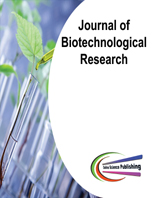Microbial Profile and Antibiotic Usage of Patients with Chronic Wounds Attending Two Hospital facilities in Ghana
DOI:
https://doi.org/10.20448/805.21.1.9Keywords:
Antimicrobials, Susceptibility, Monotherapy, Antibiotics.Abstract
Background: Chronic wounds continue to be a challenging problem and causing considerable healthcare burden globally especially to the developing countries. This study examines how patients with chronic wounds acquired them, site of the body commonly located, various bacterial isolates present, type of antibiotic usage, and their susceptibility pattern to commonly prescribed antibiotics. Methods: Two hundred and sixty (260) wound swab samples were collected from chronic wound patients attending the St. Patrick Hospital and the Nkenkenso Government Hospitals from December 2016 to June 2017. Bacterial isolates were tested against six commonly prescribed antibiotics identified in this study. Antimicrobial susceptibility testing of the clinical isolates was done according to CLSI guidelines. Results: A total of 211 (81.2%) isolates were recovered from the 260 samples. Staphylococcus aureus (30.8%) was the most predominate, followed by Pseudomonas spp. (24.9%). Majority of the patients (87.31%) with chronic wounds received antibiotics metronidazole and cefuroxime which was the most common (21.74%) antibiotics prescribed. More than 50% of the isolate were resistant to flucloxacillin and amoxicillin, whilst most of the isolates were susceptible to ciprofloxacin and clindamycin. Conclusion: The study observed that inflammation was the major cause of chronic wounds and that, most wounds were located on the lower extremity part of the body. The frequency of drug administration in the management of chronic wounds was 87.31%. The commonly prescribed monotherapy antibiotics were flucloxacillin and ciprofloxacin whilst metronidazole and cefuroxime were mostly prescribed together with most isolates resistant to flucloxacillin and amoxicillin.


